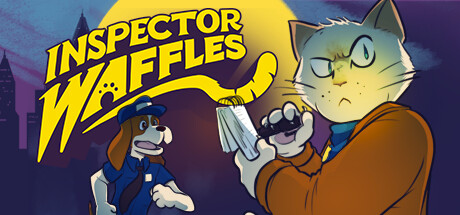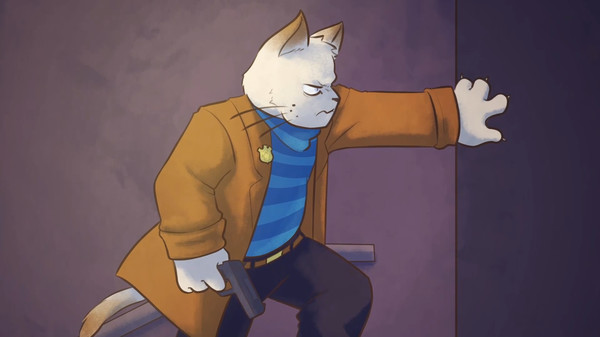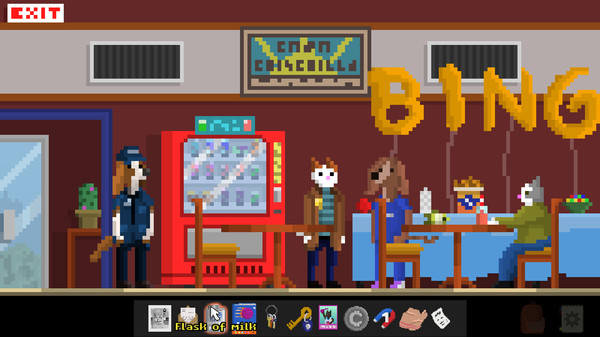Inspector Waffles
by Goloso Games





The Developer Says...
Murder. Nothin’ nice about it. In this old school detective adventure, step into the boots of whip-smart Inspector Waffles and travel the city to track hidden clues, interrogate shady suspects, and unravel a dangerous mystery. But be warned: curiosity killed the cat...
Keywords
Players Like...
❤ Intuitive Investigative Gameplay
The game's core gameplay revolves around investigating crime scenes, collecting clues, and interrogating suspects to unravel the mystery. Players take on the role of the titular cat detective as he and his new canine partner Spotty work to solve a murder case. The game utilizes an intuitive "notebook" system, allowing players to store collected items and evidence. During conversations, players can choose to present specific notebook contents as part of their questioning. This enables players to logically piece together the story and deduce the truth by making connections between the gathered evidence. Reviewers have praised this investigative gameplay loop, noting it feels satisfying and true to the detective genre without becoming overly complicated.
❤ Logical, Rewarding Puzzles
In addition to the core detective work, the game also features a variety of logical, inventory-based puzzles for players to solve. These range from finding the right items to use in specific situations, to figuring out the correct dialogue options to unlock new information. While not overly difficult, the puzzles are still rewarding to solve, often requiring players to carefully examine their surroundings and make connections between different clues. Reviewers highlight the puzzles feel well-integrated into the story, never acting as arbitrary roadblocks. The game's helpful hint system, where players can call the protagonist's mother for advice, is also praised as a thoughtful addition.
❤ Streamlined, Efficient Exploration
The game utilizes a static, point-and-click style for exploration and navigation, presenting locations as self-contained screens. This design choice maintains a brisk pace, minimizing tedious backtracking or repetitive animations. Reviewers note the lack of character movement, while initially seeming limiting, ultimately serves to keep the focus on the core investigation and puzzle-solving. The pixel art aesthetic, while sometimes making it challenging to discern specific interactive elements, also helps the locations feel compact and easy to survey. Overall, the exploration is deemed well-suited to the detective adventure genre.

